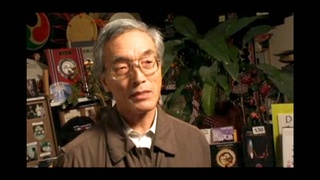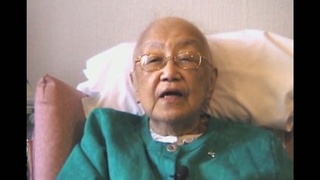Interviews
The reason he came to the United States (Japanese)
(Japanese) I was looking to go overseas, like America or some place. One day, I read in the newspaper that Sukeroku daiko performed in Brazil and set up a branch in America afterwards. That news got me all excited. I thought, “Hey, there might be a chance to play taiko in America.“ At that time, there was a song Under the Blue California Sky that swept the country. I thought, “Boy, how cool is that to play the Japanese taiko under that California sky.“ So I came over here in 1973 and stayed ever since.
Date: April 1, 2005
Location: California, US
Interviewer: Ann Kaneko
Contributed by: Watase Media Arts Center, Japanese American National Museum.










